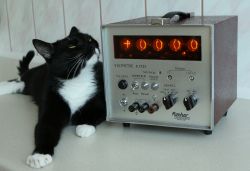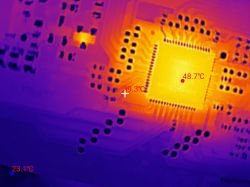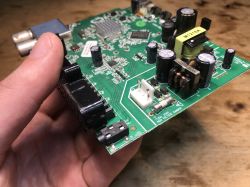FAQ
TL;DR: This 1 V–30 V electronic load sinks up to 9.99 A (60 W) with measured voltage error under 0.6 % at 5 A [Elektroda, CMS, post #17021671] “Everyone should have one in their workshop” [Elektroda, CMS, post #17017821] It doubles as a power-supply and battery tester, offers basic protections, and costs ~€15 on AliExpress [AliExpress listing, 2023].
Why it matters: A cheap, accurate dummy load lets makers validate chargers, batteries and DC supplies without risking real equipment.
Quick Facts
• Operating range: 1.0–30 V, 0.01–9.99 A, max 60 W [Elektroda, CMS, post #17017821]
• Control power: 12 V ⎓ 0.5–1 A via 5.5 × 2.1 mm jack [Elektroda, CMS, #17017821; Elektroda, endymion, #19246822]
• Display accuracy: ≤0.03 V and ≤0.05 A error at 5 V/5 A (≈0.6 %) [Elektroda, CMS, post #17021671]
• Minimum settable current: 0.01 A nominal; some boards lock to 0.20 A [Elektroda, CMS, #17017821; Elektroda, endymion, #17113930]
• Typical price: €12–€18 delivered (search “Constant Current Electronic Load”) [AliExpress listing, 2023]
1. What are the key electrical limits of the 60 W dummy load?
The load sinks 0.01 – 9.99 A while the input stays between 1 V and 30 V. Never exceed 60 W; the unit will trip “oPP” if you do [Elektroda, CMS, #17017821; Elektrola, endymion, #19246822].
2. How accurate are the internal meters?
Side-by-side photos show voltage reading within 0.03 V and current within 0.05 A up to 5 A, equal to <1 % error [Elektroda, CMS, post #17021671]
3. How do I discharge a Li-ion cell safely?
- Set cutoff voltage (e.g., 3.0 V). 2. Dial desired current (≤1 C). 3. Press On/Off to start. The upper display alternates between voltage, Ah, Wh; it blinks when finished [Elektroda, CMS, post #17017821]
4. What power supply does the control board require?
Feed the barrel jack with 12 V ⎓ 0.5–1 A. Err6 appears if the adapter is outside 11–14 V [Elektroda, CMS, #17017821; Elektrola, endymion, #19246822].
5. Can I use four-wire (Kelvin) sensing?
Yes. The small white JST header routes to a differential amplifier dedicated to remote voltage sense; attach thin sense leads there [Elektroda, zgierzman, post #17022793]
6. What do the error codes mean?
Err1 = input over-voltage, Err2 = battery absent or reversed, Err3 = battery ESR high, Err4 = general fault, Err6 = supply out of range, otP = over-temperature, Ert = sensor fault, ouP = PSU over-voltage, oPP = over-power [Elektroda, endymion, post #19246822]
7. Why does the fan run constantly or loudly?
Some boards ship with a 10 k thermistor instead of 50 k; the controller misreads temperature and drives the fan hard. Replacing it with 47 k–50 k fixes the noise [Elektroda, zgierzman, post #17018152]
8. How can I improve cooling for long 60 W tests?
Replace the stock heatsink with a PC-style radial fin and use quality thermal paste. One user ran several days near 60 W after this change [Elektroda, GrandMasterT, post #17019690]
9. Why is current unstable below 0.15 A?
The control loop loses resolution near the DAC’s bottom code; currents under ~0.15 A can drift. Newer firmware restricts the minimum to 0.20 A to avoid this [Elektroda, GrandMasterT, #17019690; Elektrola, endymion, #17113930].
10. Can I mute the buzzer?
Hold the On/Off key while applying power, rotate the encoder to “bEoF,” then confirm with On/Off. The beeper stays silent until re-enabled [Elektroda, CMS, post #17017821]
11. Which enclosure fits, and what’s the catch?
A Z3A aluminum box accepts the PCB after milling 1 mm from the rear panel; otherwise it is 2 mm too short [Elektroda, CMS, post #17090504]
12. What’s the purpose of the six-pin header under the display?
It exposes a 5 V TTL serial stream (9600 bps) broadcasting voltage, current and capacity, handy for data logging [Elektroda, viaxa, post #17022682]
13. Is there a higher-power drop-in replacement?
Commercial 200 W and 300 W versions use larger heatsinks and cost about US $35–$50; functionality stays similar [Elektroda, GrandMasterT, #17019690; Elektrola, CMS, #17019856].
14. Edge case: what happens if I power a 44 Ah car battery?
At 13 V and 4.4 A the unit runs at its 57 W thermal limit; the sink overheats quickly unless additional fans or water cooling are added [Elektroda, endymion, post #17113930]
15. Should I check transient response when testing supplies?
Yes. Connect an oscilloscope across the DUT to observe overshoot and recovery; static loads miss dynamic errors [Elektroda, elektronik666, post #17019186] "Impulse response matters as much as steady current." [Elektroda, elektronik666, post #17019186]






